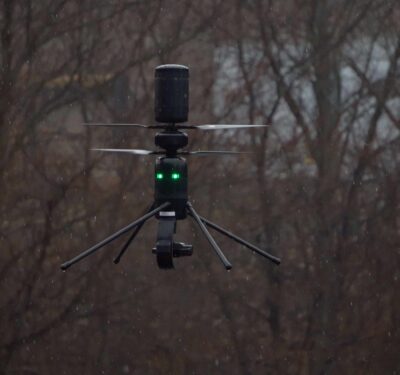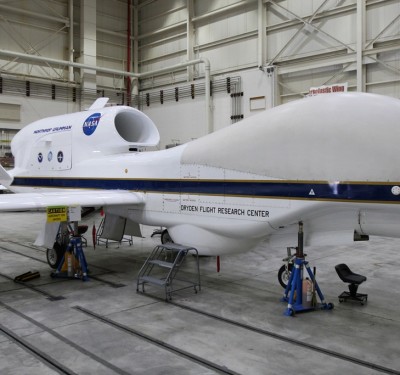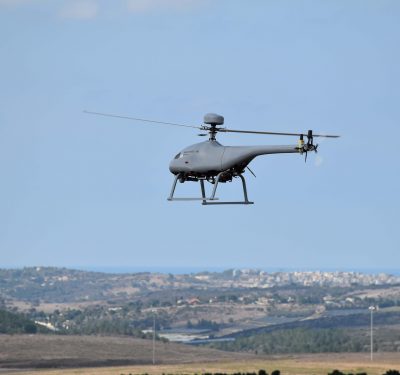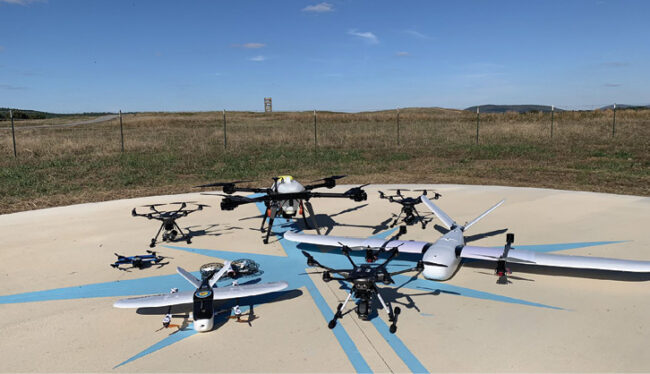
It’s been over a year since the Beyond Visual Line of Sight (BVLOS) Aviation Rulemaking Committee published its report and recommendations, which ran to nearly 400 pages.
Although the FAA has remained relatively silent on its stance regarding those recommendations, it has increasingly leveraged its various authorities to allow complex BVLOS operations across a range of use cases. Additionally, key players within the private sector continue to collaborate on the required physical and digital infrastructure needed for persistent BVLOS across the country.
GOING THE DISTANCE
Having the technology needed to safely fly BVLOS is one thing; having the place to actually fly BVLOS is another. In addition to site-specific operations, such as for a particular pipeline or agricultural field, localities continue to partner with private entities to carve out BVLOS spaces, including corridors, across the country.
Some of these locations arose out of formal government mandates, such as the various FAA Test Sites and the former Integration Pilot Program (IPP), now called BEYOND, an acronym for BVLOS Expanding Your Operations Needing Drones program. Others have cropped up in response to an infusion of grants and funds from NASA, Congress and local entities.
For example, the Northern Plains UAS Test Site in North Dakota is approaching its 10-year anniversary. Since 2019, the state of North Dakota has invested more than $50 million building a shared infrastructure, the Vantis BVLOS network, specifically to support BVLOS operations.
The test site administers and runs Vantis with its system integrator partner, Thales. The goal is to ultimately create a statewide UAS BVLOS system.
“The associate elements to achieve BVLOS, C2 [command and control], surveillance, an operations center and backhaul data networks can be cost prohibitive for companies seeking to perform BVLOS flights,” said Erin Roesler, the site’s director of operations. “We built Vantis to alleviate the need for each operator to essentially ‘BYOI—bring your own infrastructure.’ We welcome industry to share our infrastructure and fly with us.”
Current ongoing BVLOS-related efforts at the site range from UAS traffic management trials with NASA and the Department of Defense (DoD) to BVLOS shielded operations in partnership with the University of North Dakota.
While North Dakota remains at the top of the list of “drone friendly” states, according to George Mason University’s Mercatus Center, Oklahoma bumped it from its No. 1 spot last year. The state is home to the Choctaw Nation of Oklahoma, which has been involved in BVLOS research and development since 2018, first through its key role in the IPP and now with the BEYOND program.
In 2019, the FAA granted the Choctaw Nation of Oklahoma one of the first BVLOS waivers to fly in the six-by-nine mile BVLOS corridor contained on its test range at Daisy Ranch. The Nation, situated in a somewhat sparsely populated area just across the Red River and the Texas state line, in partnership with the North Texas community, now seeks to build out a cross-border BVLOS corridor connecting the freight corridor portion of Highway 69 that runs through the Choctaw Nation to Dallas and Fort Worth.
“Our next projected BVLOS corridor will be about 50 miles all the way from the north of the Choctaw Nation reservation between the city called McAlester south to the city of Atoka,” said James Grimsley, the executive director of Advanced Technology Initiatives for the Choctaw Nation of Oklahoma.
“Then we will grow it to 100 miles. After that, we plan to add arterial type air corridors on top of other ground-based transportation corridors, to ultimately have a hub and spoke network.”
As part of the progression, the Choctaw Nation of Oklahoma hopes to have FAA approval for BVLOS operations throughout its entire 11,000 square mile reservation by the end of 2024.
While the Choctaw Nation efforts may be more commonly known throughout the industry, a new group in Oklahoma has also raised its hand in the BVLOS race. Oklahoma State University, Osage LLC (a corporation affiliated with the Osage Nation) and Tulsa Innovation Labs have collaborated to create the Skyway Range. Part of the Tulsa Regional Advanced Mobility (TRAM) Cluster, a recent U.S. Department of Commerce grant funds this effort. The range will open in four phases, extending an existing BVLOS site near Stillwater, Oklahoma to nodes in Pawhuska and Tulsa. When completed, the range will be 114 nautical miles long and include access to the 43,000-acre Osage Nation Ranch and Skyway36 drone port in Tulsa. Notably, this node is located about 100 yards outside of the municipal boundary of Tulsa and only six miles from Tulsa International Airport. The partners hope to enable urban and peri-urban testing not otherwise possible at existing corridors.
The Northern Plains UAS Test Site isn’t the only one approaching its tenth birthday—Oneida County’s UAS Test Site at Griffiss International Airport in Rome, New York, is as well. Just recently, the New York site, operated as a partnership between the county, AX Enterprize and NUAIR, announced a ground-breaking FAA approval. It allows the New York team and its qualified customers to conduct flight tests of platforms, systems, concepts of operation and other capabilities on drones up to 300 pounds throughout its 50-mile flight corridor to Syracuse, without having to apply for one-off exemptions and Special Airworthiness Certificate-Experimental Category approvals.
“This new FAA designation removes some previous restrictions making it easier to test larger drones,” said County Executive Anthony J. Picente Jr. in announcing the approval. “Our test site is already the global leader for UAS research and development, and now, we will be able to test more advanced operations and be financially compensated for it. This is great news for Oneida County, our partners at the test site and for the businesses and agencies who use our facility to advance the industry.”
These efforts illustrate some of the progress industry has spurred to create the much-needed infrastructure for ubiquitous BVLOS operations.
EXCEPTIONS SWALLOWING THE RULE?
BVLOS is ramping up. As previously reported, the four-year period between 2016 and 2020, BVLOS waivers only accounted for 59 of all of the FAA’s granted waivers to Part 107. In the two years and four months since then, the FAA has published 70 additional such waivers. In 2023 alone, the FAA has given the nod to 42 of those 70, or about 60%.
Perhaps even more significant than the notable uptick in BVLOS waivers, the FAA seems apt to allow broad and complex operations, through a variety of means at its disposal, even beyond Part 107.
For example, in March, the FAA awarded the Pearland Police Department of Texas the first certificate of authorization under the Part 91 general operating rules to operate its drone as first responder program beyond visual line of sight. It eliminates the need for human visual observers. Iris Automation’s Casia G ground-based air surveillance system and DroneSense’s situational awareness software both weighed heavily in the safety case supporting the FAA’s decision.
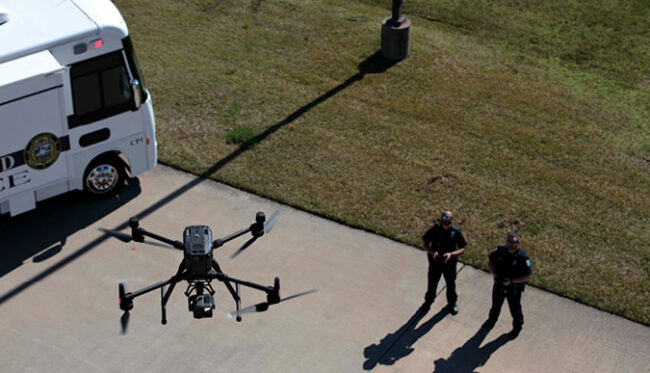
“In a climate where personnel shortages are impacting first responders across the nation, having a fully BVLOS drone as first responder program greatly enhances resource allocation while maintaining a high level of situational awareness for first responder safety,” said Chad Randall, the assistant Chief of Police at the Pearland department.
Also in March, at the Droneresponders conference, FAA reps announced their intention to allow a new specialized BVLOS–Obstruction Shielding waiver that doesn’t require detect and avoid technology or a visual observer. It allows daytime UAS flights under Part 107, within 50 feet above or laterally from a man-made or natural obstruction with a hard ceiling of 400 feet above ground level in Class G airspace. Operators must file a Notice to Air Mission, or NOTAM, for the operation and use ADS-B In to assist in alerting the remote pilot in charge and crew of other aircraft in the area.
The ideal concept of operations for this new waiver includes public safety missions (fire, police, emergency management), linear infrastructure inspections (e.g., power lines and pipelines) and other commercial operations (e.g., construction and real estate). The FAA plans to roll this out through its DroneZone similar to how it did for night operations before it published that final rule.

“This landmark BVLOS-OS is a game-changer, not just for emergency responders, but for a wide range of use cases. It’s a welcome addition to the flexible tools, such as the Tactical BVLOS waiver, that the FAA continues to provide our nation’s public safety agencies to keep our citizens safe,” said Charles Werner, director of the Drone Responders Public Safety Alliance.
In February, the FAA bestowed upon Spright, the “first of a kind” non-geospecific waiver to fly its UAS up to four nautical miles to perform utility infrastructure surveys. That same month, in an unexpected but welcome move, the FAA agreed that Percepto’s remote inspections for its drone in a box operations provide a higher quality of safety information than an onsite crew and don’t require exemptions.
In January, the FAA granted Percepto an “unprecedented” BVLOS waiver to perform inspections at 200 feet above ground level, a relatively high altitude for its drone in a box automated flights. This came on the heels of a November 2022 nationwide BVLOS waiver, another FAA first, for the company.
“We are grateful to the FAA’s continued diligence in carefully reviewing the safety cases that Percepto brings forward. This series of unheard of waivers and permissions allows us to continue to support the critical infrastructure community across the U.S. safely, timely and efficiently,” said Neta Gliksman, Percepto’s vice president of Policy and Government Affairs.
ARE WE THERE YET?
While BVLOS operations may be in the walk phase of the FAA’s crawl-walk-run approach, BVLOS rulemaking continues to crawl.
Michael Robbins, chief advocacy officer for the Association for Uncrewed Vehicle Systems International (AUVSI), provided insights from a recent FAA listening session with industry. He said, “We are not expecting the FAA to put out a draft notice of proposed rulemaking until February of next year. That’s 23 months after the ARC report came out.”
In terms of timelines, based on past recent experience (think: remote identification), once a Notice of Public Rulemaking launches, the public comment period takes at least 60 days. Then the FAA has to review and adjudicate those comments. Robbins explained, “These rules have to not only go through to the FAA process. They have to go through the Department of Transportation, then through the Office of Management and Budget and then through yet another process at the White House,” Robbins said. “Throughout these various reviews, there is a back and forth.” Only when these various levels of review and scrutiny are complete can the Administration finalize the rule. For the remote identification rule, this process took about two years.
“We’re struggling with that timeline a bit,” Robbins said. “But we made that clear to the FAA. On a positive note,” he continued, “all of these listening sessions and the pressure that AUVSI and industry is keeping on the FAA and Congress is really helping. They are definitely looking for ways to use the tools they already have to enable more BVLOS flights and to continue to advance the industry through waivers and other means.”
Those other means, according to Robbins, include using U.S. Code § 44807, which grants the secretary of transportation the authority to use a risk-based approach to determine if certain UAS may operate safely in the NAS on a case-by-case basis. Robbins predicts 44807 “is going to play a much bigger role going forward,” and said, “I think the agency sees that as a bridge between where we are today and the final rulemaking. By leaning on that 44807 risk-based waiver authority, they can allow more complex operations to occur and allow industry to scale a little bit more.”
Although BVLOS has not been fully realized on a meaningful scale across the industry, progress has been made…and a draft rule appears to be within sight. In the meantime, keep your eyes peeled on the Federal Register for updates, keep filing those waivers and keep flying those corridors.


